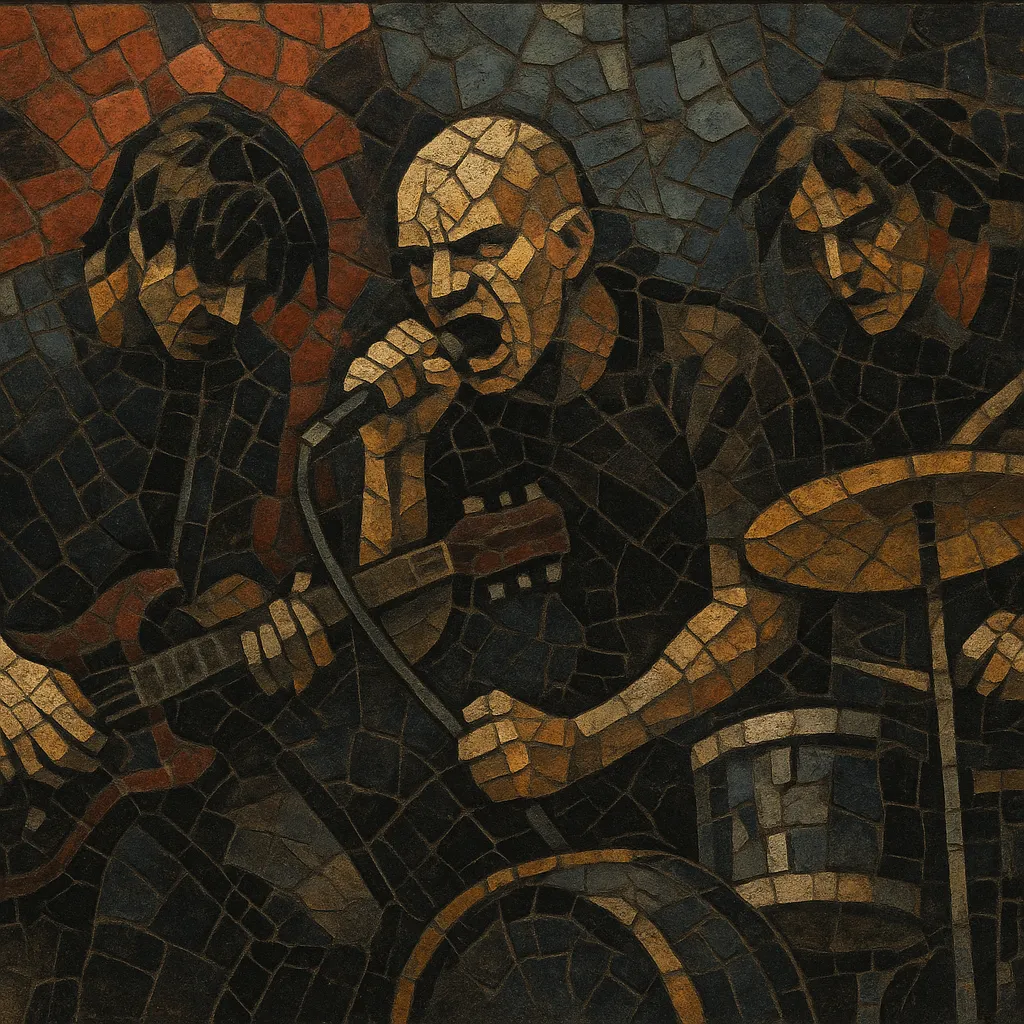Rock in Opposition (RIO) is a politically minded, experimental branch of progressive rock that emerged in late-1970s Europe as both a musical approach and a collective stance against the mainstream record industry.
Musically, RIO draws on modern classical composition, free jazz, chamber music, and avant-garde practices, favoring complex song forms, odd meters, dissonant harmonies, abrupt contrasts, and timbral exploration. It often replaces rock’s verse–chorus logic with through-composed structures and ensemble interplay reminiscent of contemporary classical or chamber music.
As a movement, RIO began when Henry Cow convened like‑minded groups for a 1978 festival, uniting bands from several countries who were too experimental for commercial labels. The name has since become shorthand for a broad aesthetic—sometimes called “RIO/avant-prog”—that values independence, compositional rigor, and sonic adventurousness.
Rock in Opposition took shape in 1978 when the British group Henry Cow organized a London festival inviting bands who shared an adventurous ethos but lacked industry support. The first roster included Henry Cow (UK), Etron Fou Leloublan (France), Samla Mammas Manna (Sweden), Stormy Six (Italy), and Univers Zero (Belgium). These groups shared affinities—complex composition, chamber-like instrumentation, free-jazz edges, modernist harmony—yet each reflected national scenes and unique aesthetics.
“Rock in Opposition” was as much a declaration as a genre label. The participating bands created a loose network for touring, distribution, and mutual support, explicitly opposing commercial gatekeeping. Musically, they pushed progressive rock into more radical territory, adopting techniques from modern classical (atonality, extended forms, counterpoint), free improvisation, and non-rock instrumentation (woodwinds, strings, accordion, piano, tuned percussion).
Although the original collective was short-lived, its aesthetic spread. Belgian and French circles (Univers Zero, Present, Art Zoyd) refined a darker, chamber-rock direction; Italian and Scandinavian branches preserved folk inflections and absurdist touches. Spin-off projects (Art Bears, News From Babel) emphasized song-form experimentation and political texts. Independent labels, fanzines, and small venues sustained the scene across Europe and North America.
From the 1990s onward, new groups in Europe and the Americas (e.g., Thinking Plague, Miriodor, Guapo) adopted the RIO/avant-prog language. Periodic RIO-branded festivals and gatherings—particularly in France—helped codify the term for later generations. The movement’s influence can be heard in math rock’s metrical sophistication, avant‑garde metal’s compositional ambition, and the enduring strand of experimental rock that privileges independence, complexity, and transnational collaboration.
Use a chamber‑rock palette in addition to a core rock setup: electric guitar and bass, drum kit, piano/keys, and woodwinds or strings (clarinet, bassoon, violin, cello). Consider accordion, marimba/vibes, prepared piano, and extended techniques to broaden timbre.
Favor through‑composed or suite-like forms instead of verse–chorus. Develop motifs via counterpoint and variation, using sectional contrasts (sudden tempo, texture, or harmony changes) to create narrative momentum.
Employ odd meters (5, 7, 9, 11), frequent meter changes, polyrhythms, and hocketing. Drums should articulate form and counterpoint, not just a backbeat. Interlock parts so rhythm and melody are inseparable.
Explore dissonance, modality, atonality, and pandiatonic clusters. Write independent lines for each instrument (contrapuntal texture) and use voice-leading to manage dense sonorities. Sparse, pedal-point passages can heighten tension before dense tutti entries.
Stage dynamic extremes—from whisper‑quiet chamber passages to explosive full-band statements. Contrast acoustic timbres with electric saturation; use rests and space to frame complex material.
When using vocals, consider politically engaged, surreal, or literary texts. Treat the voice as an instrument: speak‑singing, counter-melodies against instrumental lines, or stark narrative delivery can all fit the idiom.
Record live as an ensemble when possible to preserve interplay. Rehearse sectional transitions meticulously; complex music benefits from clear cues, click tracks for tricky passages, and detailed scores/parts (traditional notation alongside graphic cues for extended techniques).


